Vegan Pavlova
This vegan pavlova is delicate and light with a crisp outer shell. Topped with coconut whip and fresh fruit it is delicious and made without eggs.
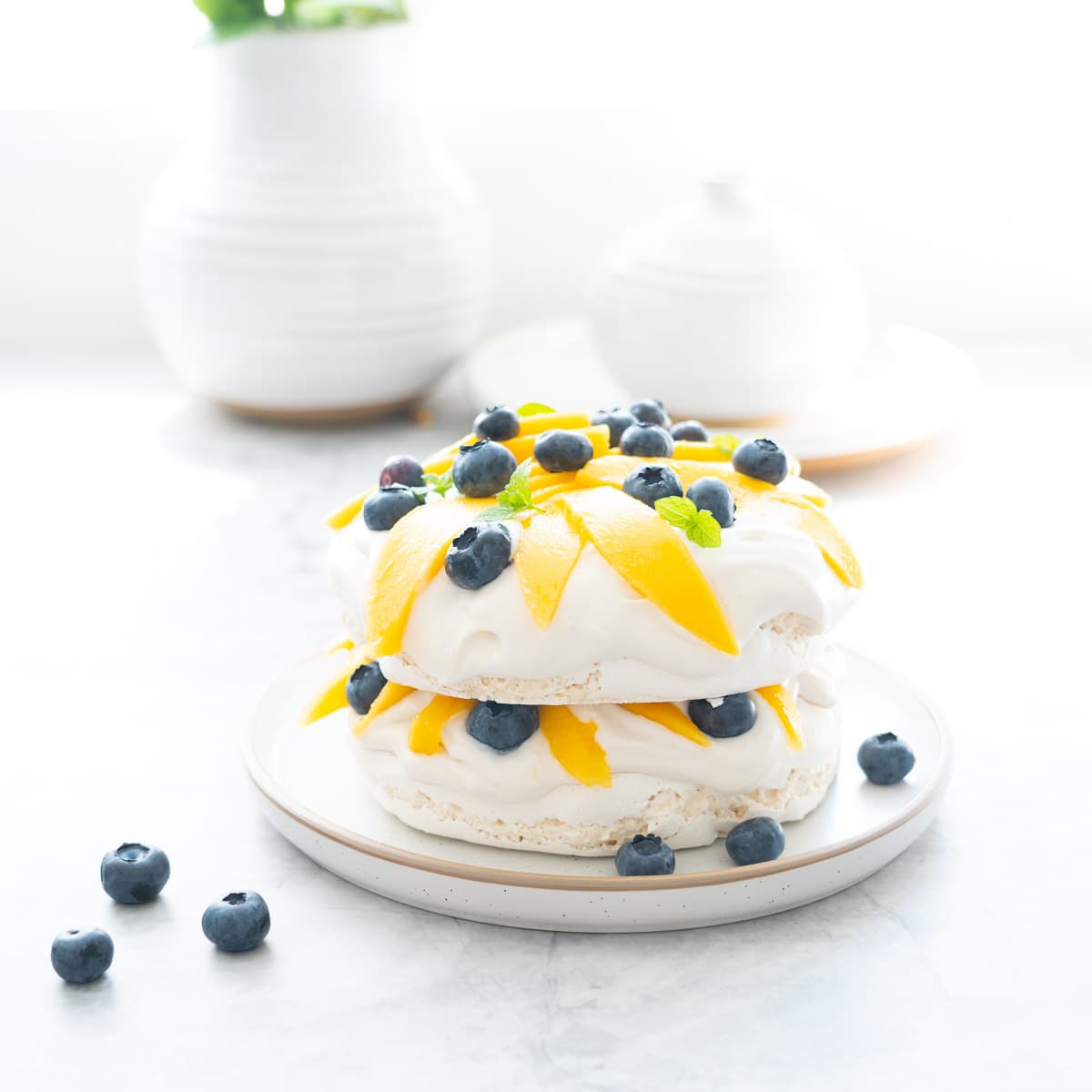
Why This Recipe Works
- Egg-free, Dairy-Free and Gluten Free
- Economical to make
- A Perfect Christmas dessert
Ingredients you will need
- canned chickpeas
- vanilla extract
- cream of tartar
- caster sugar
- cornflour
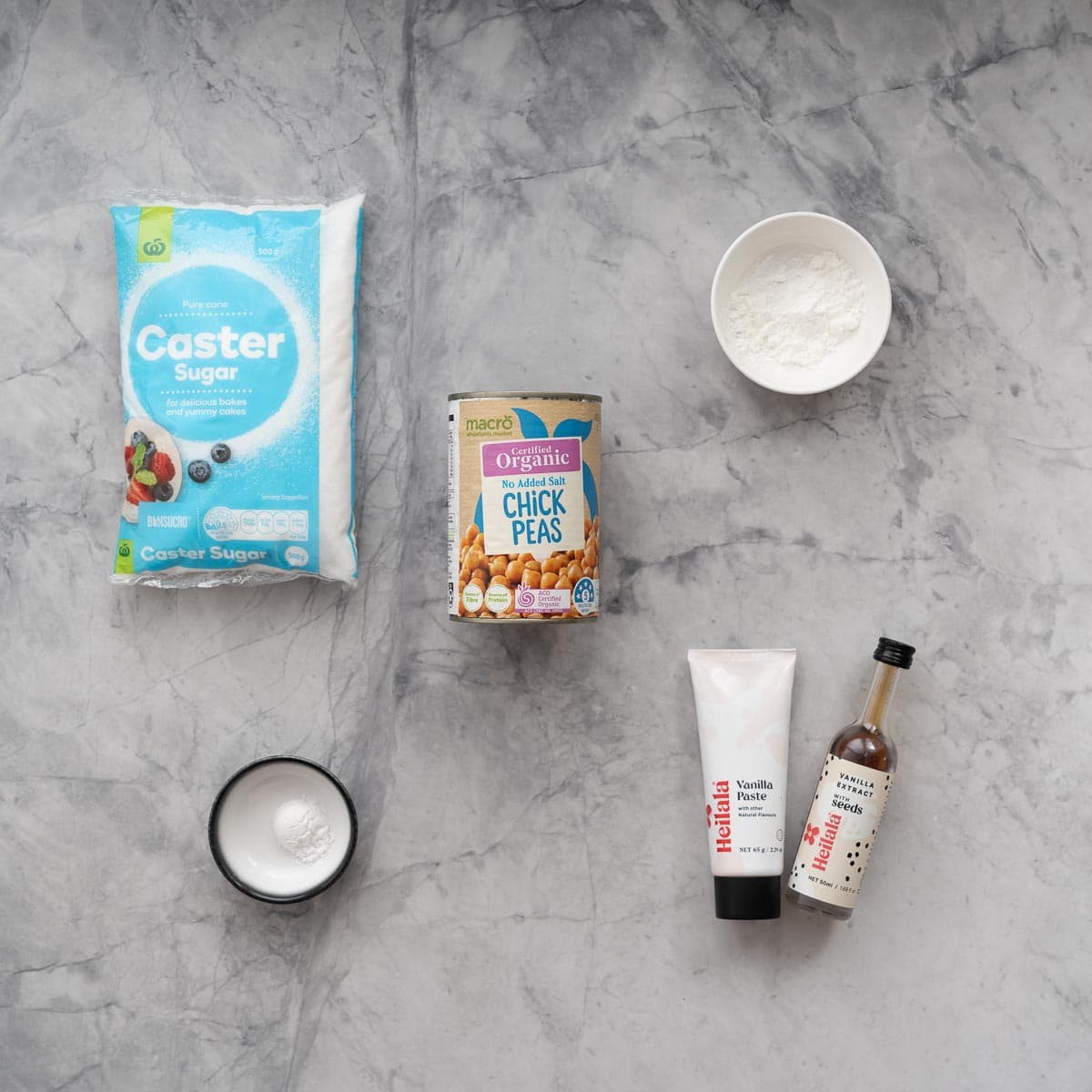
Ingredient Notes and Substitutes
- Canned chickpeas: Look for unsalted canned chickpeas, the liquid from canned white beans such as cannellini beans will also work
- Vanilla extract: Be sure to use a pure vanilla extract for the best flavour.
- Cream of tartar: The cream of tartar can be left out, the pavlova will work without it. Its role in pavlova is as a stabiliser and speeds up the beating process.
- Caster sugar: For a softer marshmallowy pavlova you can use icing sugar instead of caster sugar.
- Cornflour: Corn flour (corn starch) helps the interior of a pavlova stay soft. Arrowroot can be used as an alternative.
Step-by-step instructions
Below are illustrated step-by-step instructions to make my vegan pavlova recipe, if you prefer just the written instructions then head straight to the printable recipe card below.
Step one: Using a sieve drain the chickpeas, making sure you keep the liquid. The chickpea water you have drained is called Aquafaba. When I drain the Aquafaba from two cans of chickpeas I get 280 grams or just over a cup
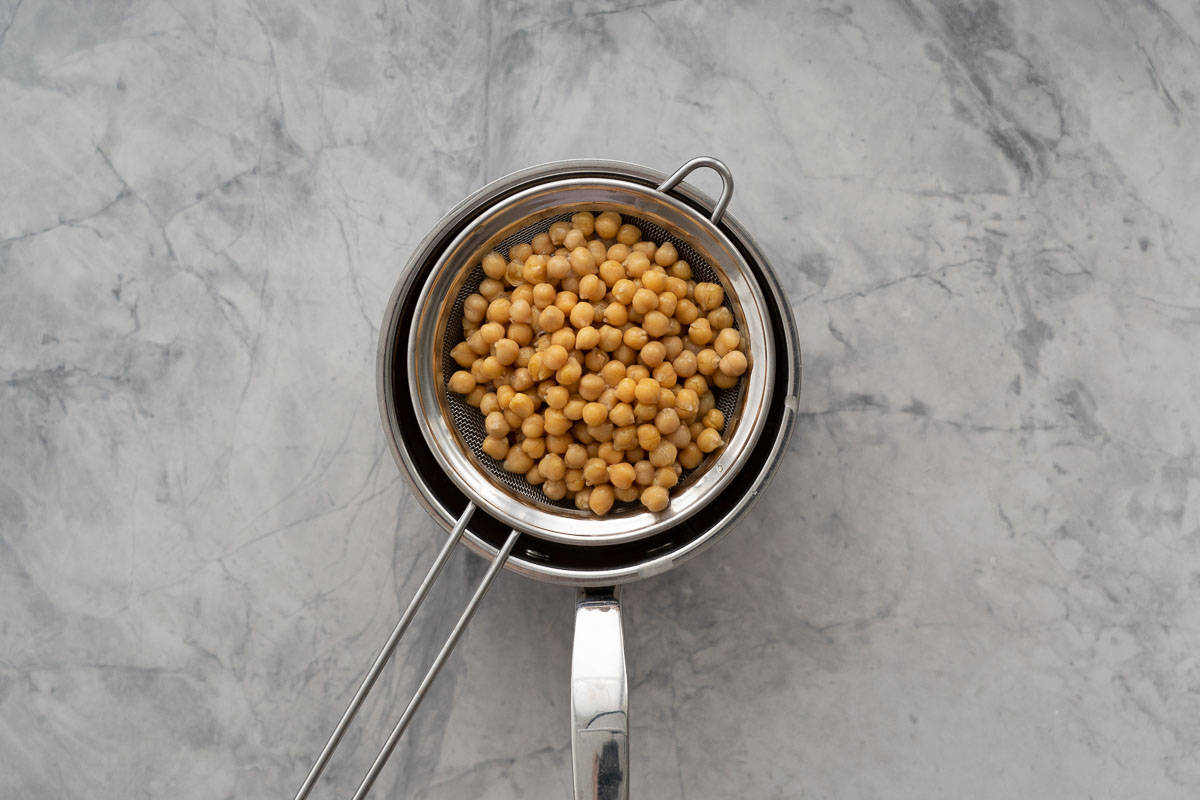
Step two: Reduce your Aquafaba: Simmer the aquafaba in a small saucepan until it has reduced by around 50% so that you have around half a cup or 140 grams. Chill the reduced aquafaba in the fridge until completely cool. The aquafaba will go a little like jelly, (a bit like egg whites this is the consistency you want).
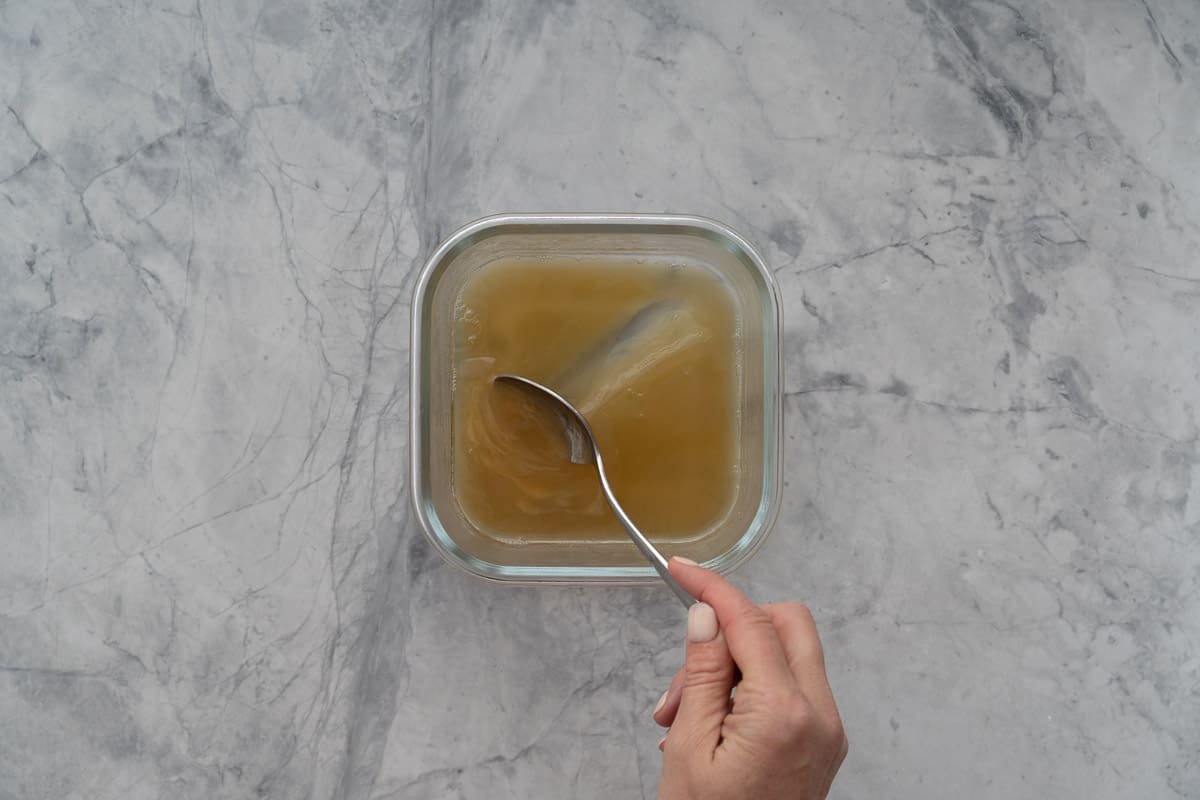
Step three: Preheat your oven to 130 degrees Celsius
In the bowl of a stand mixer place your cooled reduced aquafaba, vanilla extract and cream of tartar Beat the aquafaba on medium speed until soft peaks form.
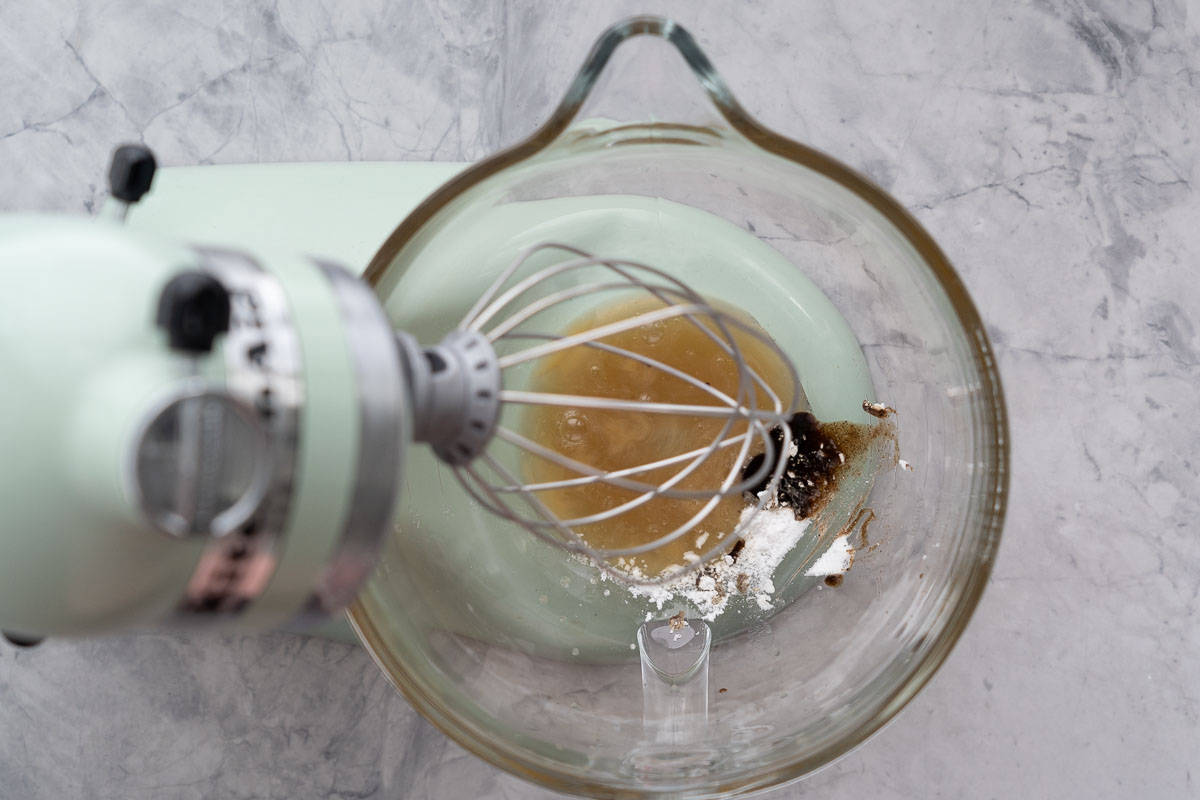
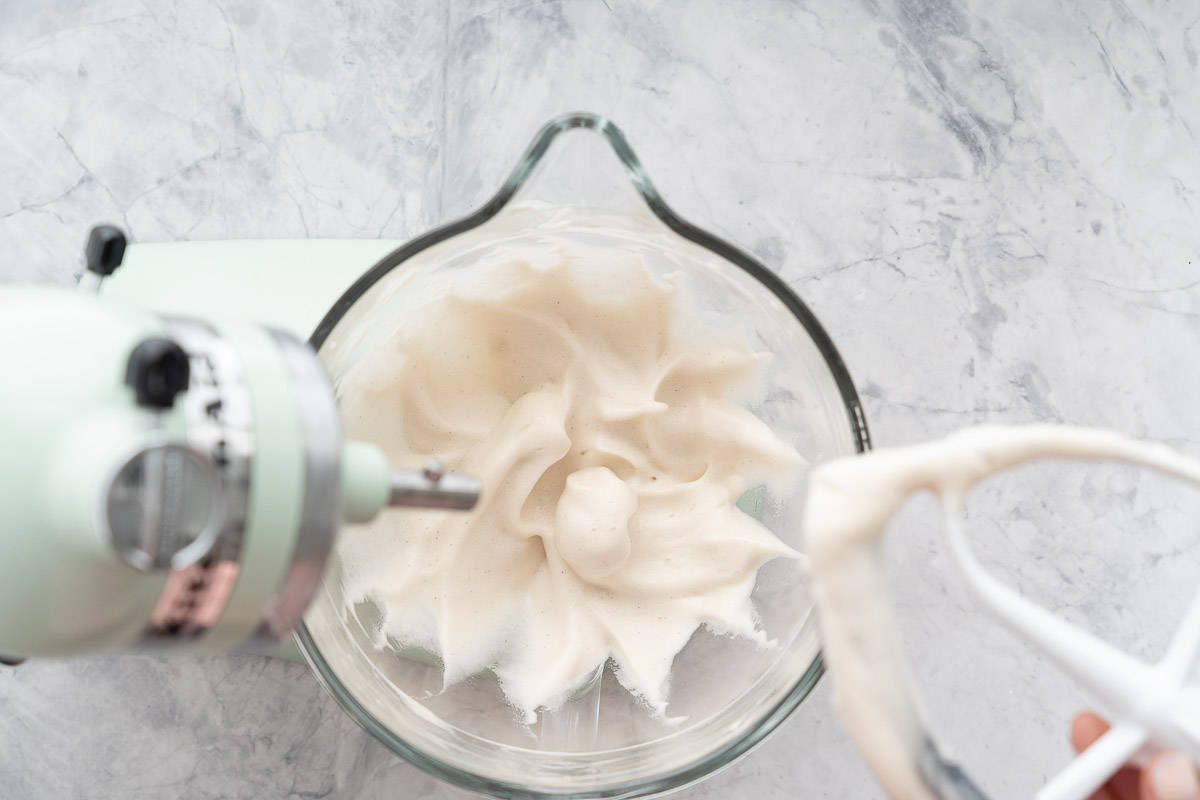
Step four In a separate mixing bowl whisk together the sugar and the cornflour.
Step five: Increase the speed of your stand mixer to high. Add the sugar mixture to the Aquafaba a heaped tablespoon at a time, until it has all been added, continue beating until the Aquafaba is glossy and stiff peaks form and hold when you remove the beater.
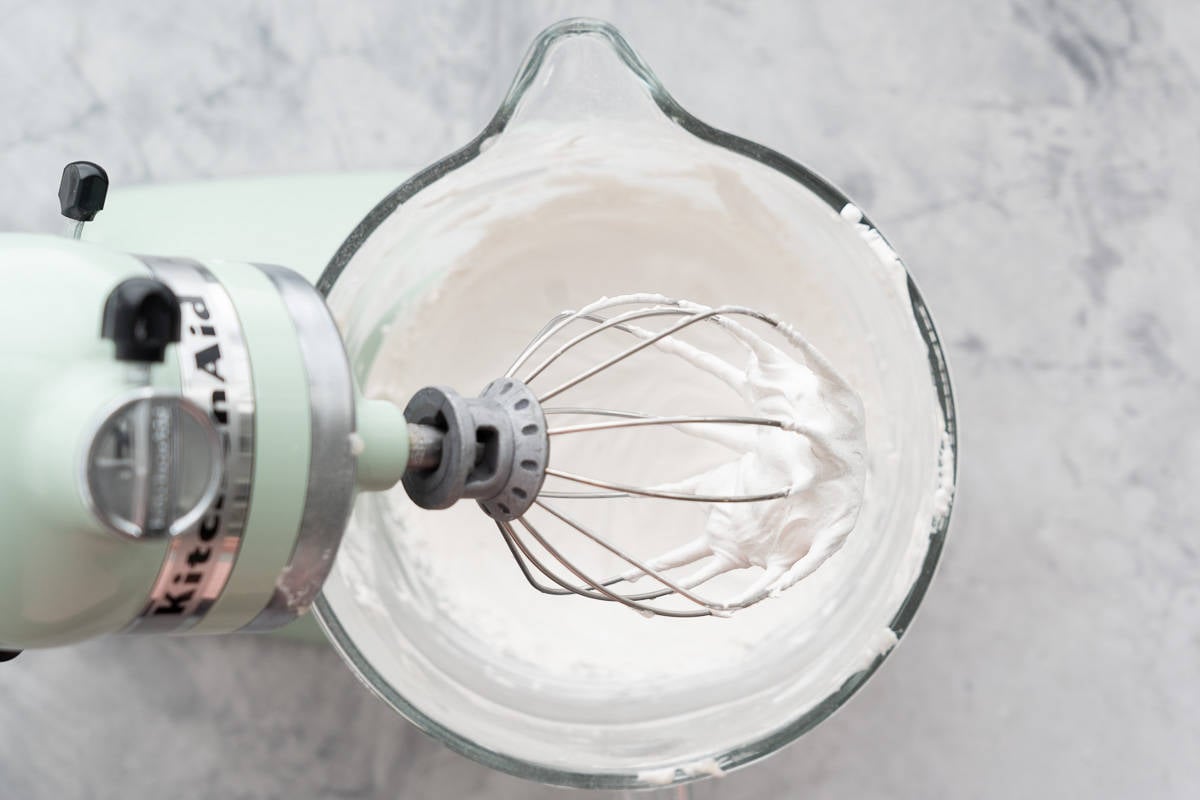
Step six: Line a baking tray with baking paper/parchment paper, and dust the baking paper with cornflour (this will stop the pavlova from sticking to the baking paper.
Place a bowl that is approximately 15cm in diameter onto the lined cornflour-dusted tray rim down, and lift up the bowl, You should now have a circle you can use as a guide for forming your pavlova. (Alternatively, you can make two smaller pavs and stack them).
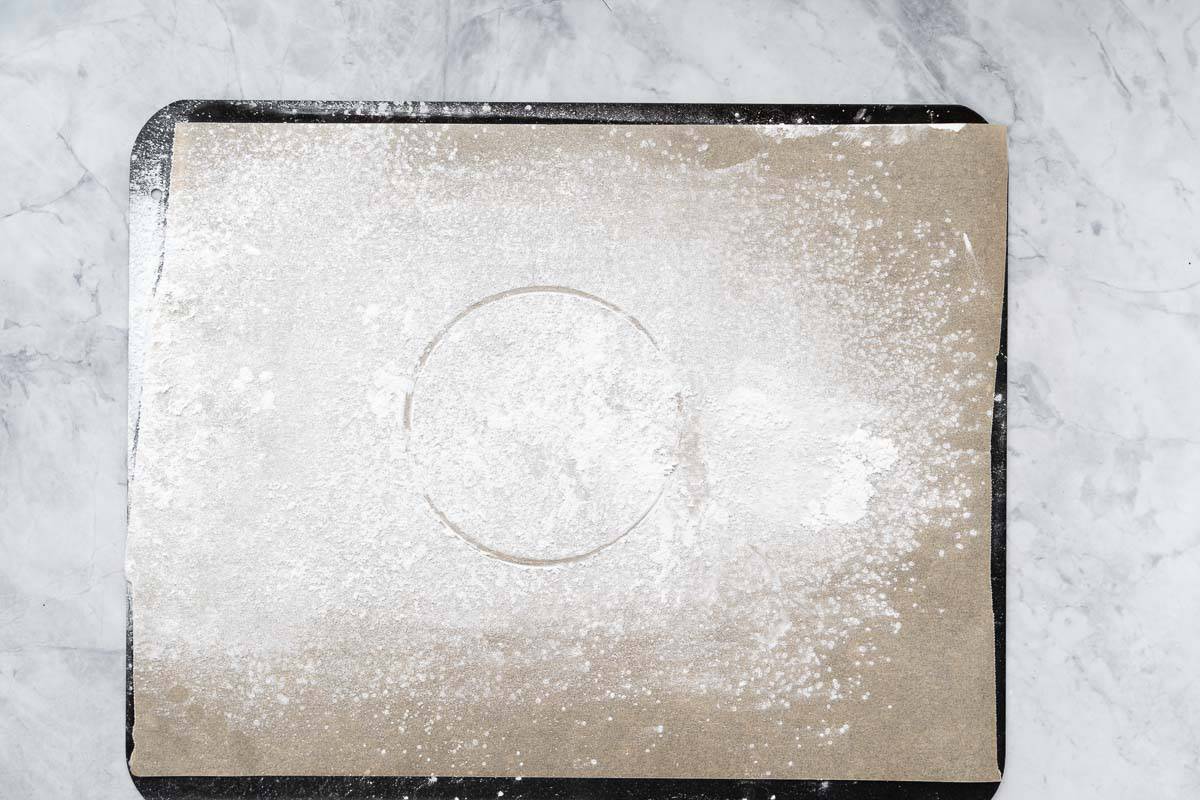
Save This Recipe!
Step seven Spoon the meringue into the centre of the circle, use a spatula to shape the pav. Place the pavlova in the preheated oven, once the door is closed reduce the temperature to 100 degrees Celsius
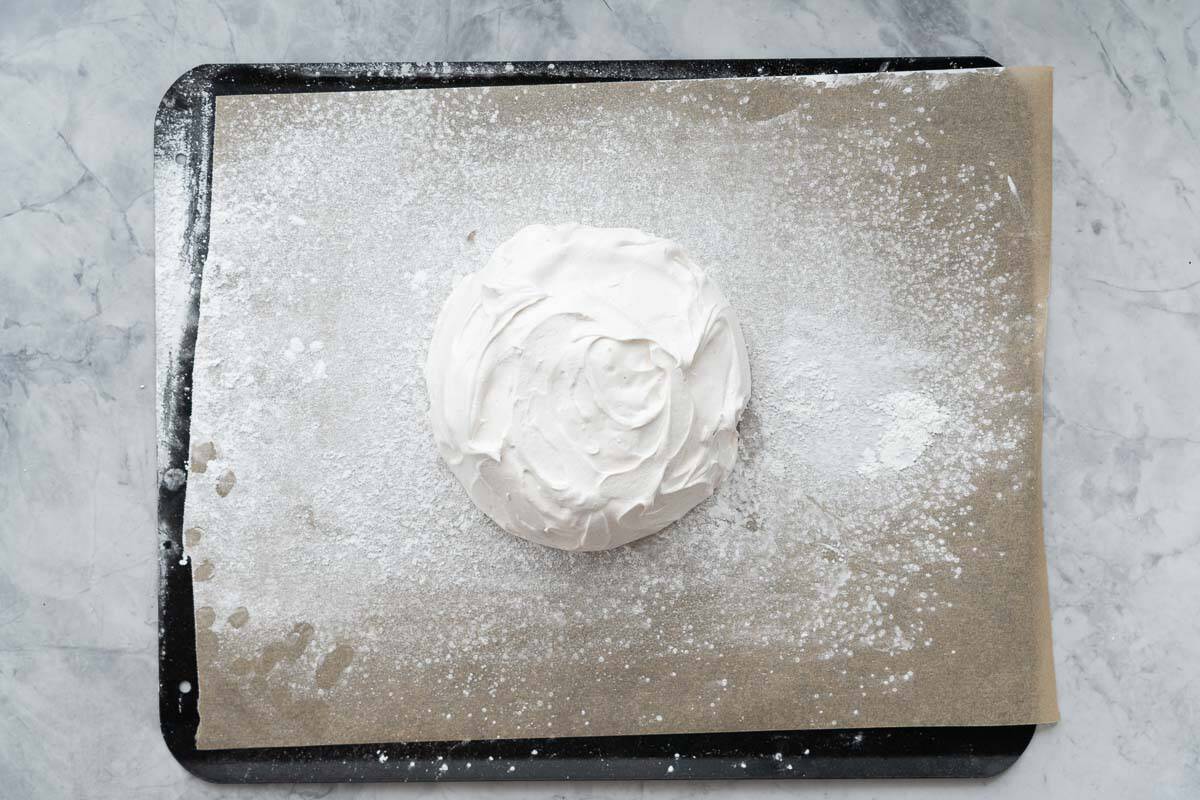
Step eight: Bake the pavlova for 2 hours, turn the oven off, leaving the pavlova inside the oven to cool for at least 4 hours or overnight.
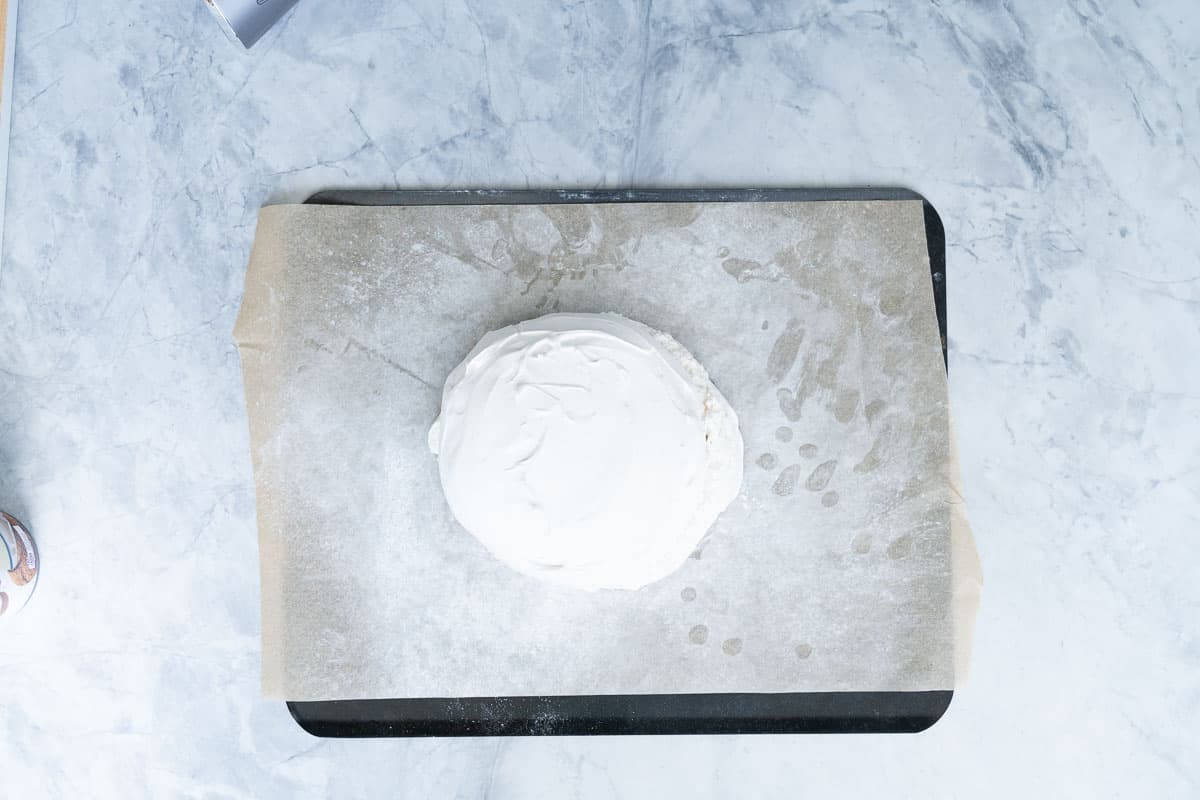
Step nine: Once cooled decorate the pavlova with whipped coconut cream and fresh fruit.
Enjoy!
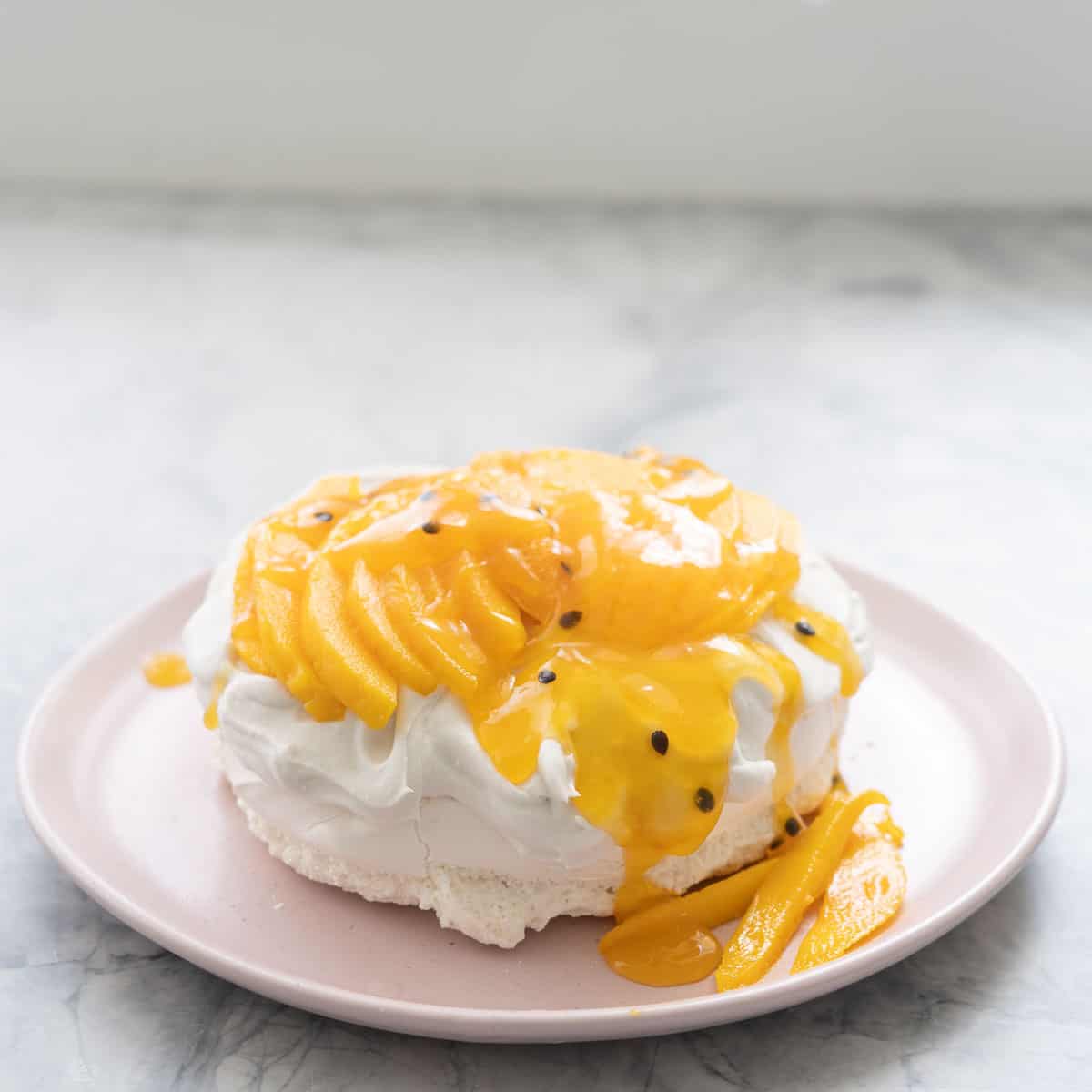
Top Tips
Here is how you can make this vegan pavlova perfectly every time!
- Pre-heating the oven then reducing the temperature when you pop the pavlova in the oven helps create the crust on the outside of the pavlova
- When I make traditional pavlova I like to pile them high, I have found with vegan pavlovas it is better to make thinner pavlovas and stack them if you want a taller pavlova.
- Pavlova and merginues are all about the ratio of egg white (or aquafaba in this case) to sugar. Essentially you want 2 parts sugar to 1 part aquafaba. In this recipe it is ½ a cup of aquafaba to 1 cup of sugar.
- Reducing the aquafaba increases the protein content and makes it much easier to whip to stiff peaks.
- My dairy-free whipped cream recipe is perfect with this pavlova, be sure to top with cream just before serving as if you leave the pav topped with cream for too long the moisture content makes the pavlova collapse.
- Any soft fresh fruit is lovely with this dessert, I love sliced mango, but kiwi fruit, strawberries, raspberries, and blueberries are all lovely, as is a drizzle of passionfruit pulp.
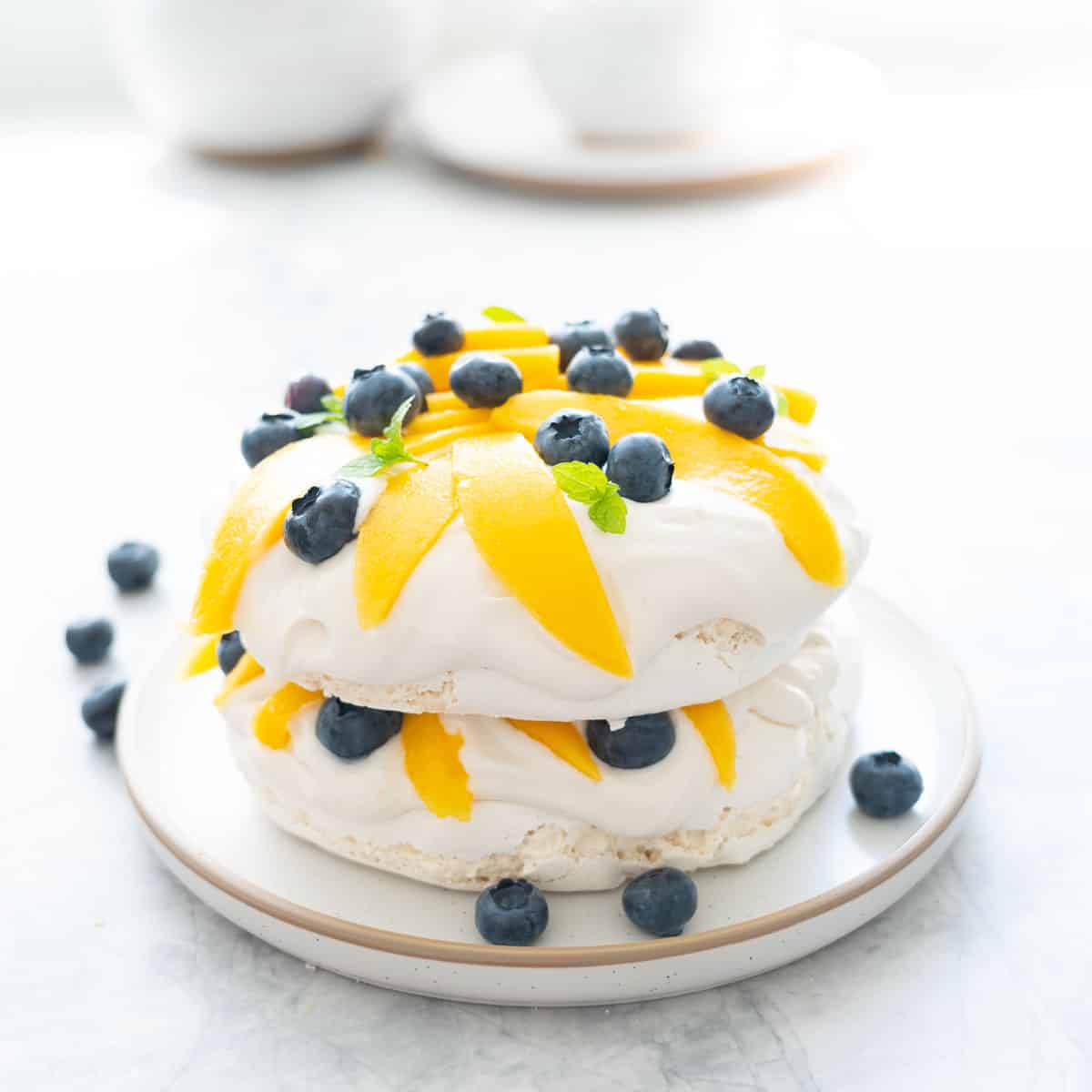
FAQs
Vegan pavlova is made from drained canned chickpea brine which is also known as aquafaba. It has a high protein content and behaves like egg whites when whipped.
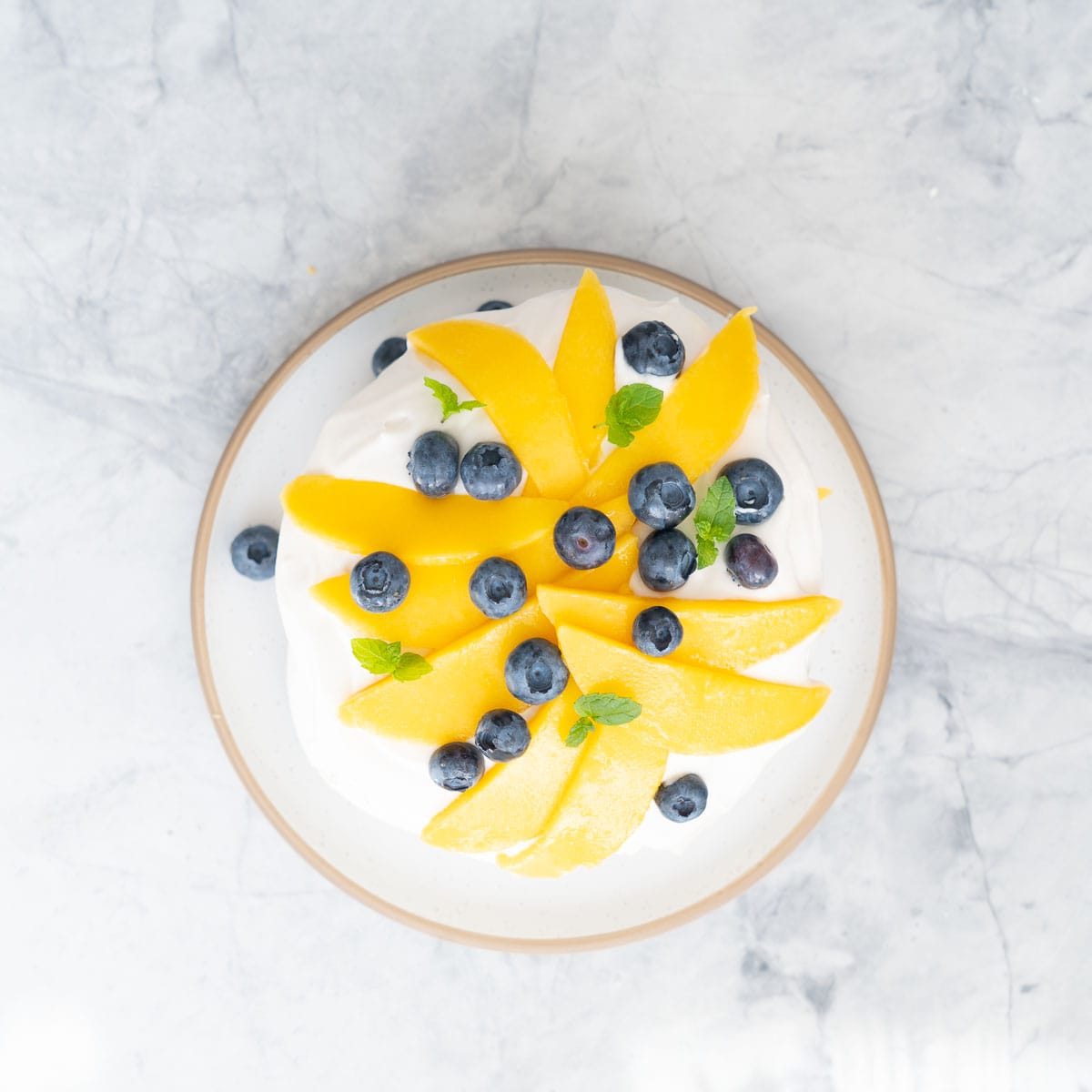
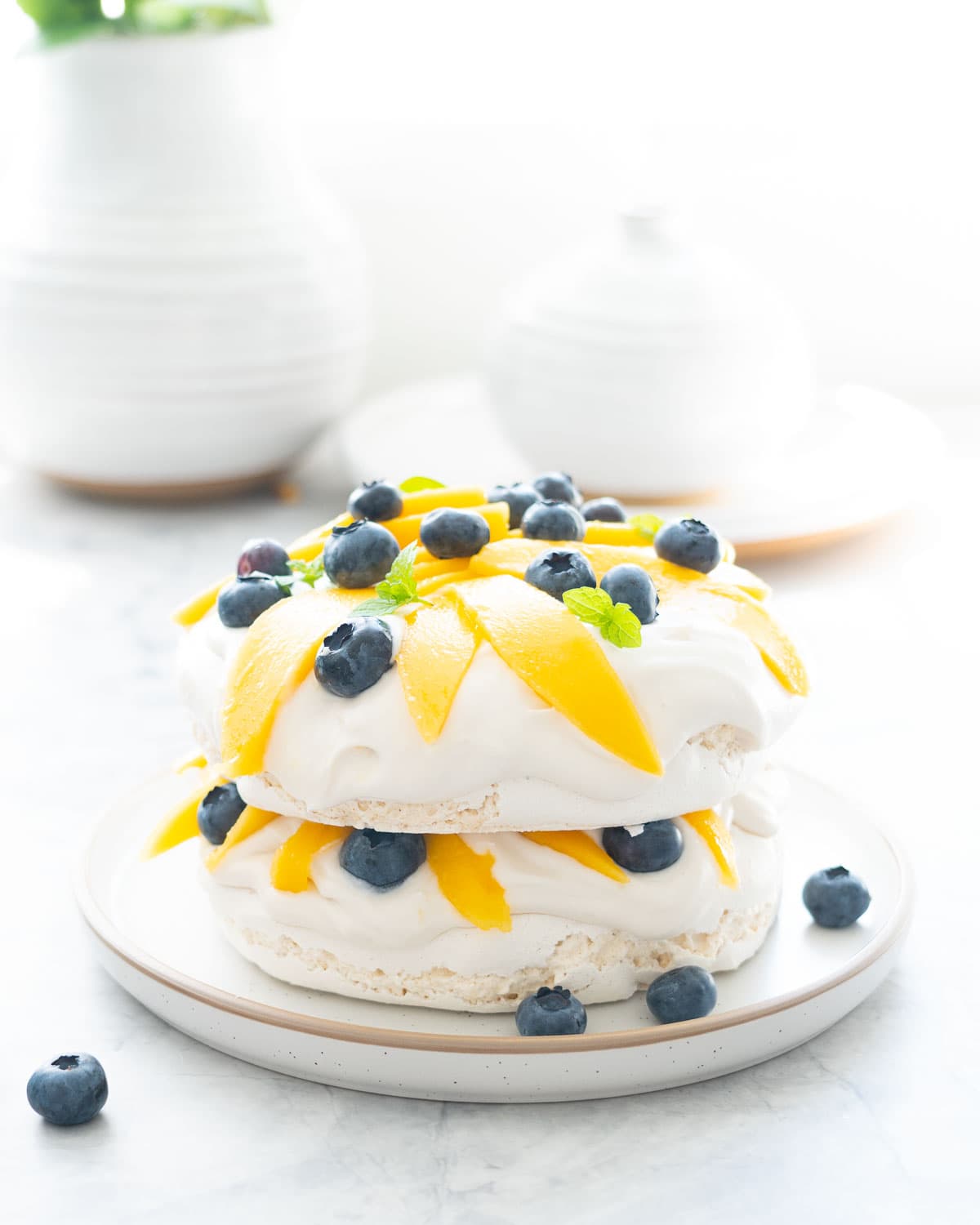
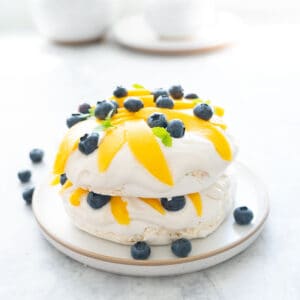
Vegan Pavlova
RATE THIS RECIPE
Save This Recipe!
Ingredients
- 2 cans chickpeas 800 grams
- 1 teaspoon vanilla extract
- ½ teaspoon cream of tartar
- 1 cup caster sugar
- 2 teaspoons cornflour plus extra for dusting
Instructions
- Using a sieve drain the chickpeas. The liquid you have drained is called Aquafaba. When I drain the Aquafaba from two cans of chickpeas I get 280 grams or just over a cup
- Reduce your Aquafaba: Simmer the Aquafaba until it has reduced by around 50% so that you have around half a cup or 140 grams. Refrigerate the reduced Aquafaba until completely cool. The Aquafaba will go a little like jelly, this is the consistency you want.
- Preheat your oven to 130 degrees Celsius
- In the bowl of a stand mixer place your cooled aqua faba, vanilla extract and cream of tartar Beat the aqua faba on medium speed until soft peaks form.
- Whisk together the sugar, cornflour.
- Increase the speed of your stand mixer to high. Add the sugar to the Aquafaba a heaped tablespoon at a time, until it has all been added, continue beating until the Aquafaba is glossy and stiff peaks form and hold when you remove the beater.
- Line a baking tray with baking paper, and dust the baking paper with cornflour (this will stop the pavlova from sticking to the baking paper.
- Place a bowl that is approximately 15cm in diameter onto the cornflour-dusted tray rim down, and lift up the bowl, You should now have a circle you can use as a guide for forming your pavlova. (Alternatively you can make two smaller pavs and stack them)
- Spoon the meringue into the centre of the circle, use a spatula to shape the pav.
- Place the pavlova in the preheated oven, once the door is closed reduce the temperature to 100 degrees Celsius
- Bake the pavlova for 2 hours, turn the oven off, leaving the pavlova inside the oven to cool for at least 4 hours or overnight.
- Once cooled decorate the pavlova with whipped coconut cream and fresh fruit.
- Enjoy
Notes
- Pre-heating the oven then reducing the temperature when you pop the pavlova in the oven helps create the crust on the outside of the pavlova
- When I make traditional pavlova I like to pile them high, I have found with vegan pavlovas it is better to make thinner pavlovas and stack them if you want a taller pavlova.
- Pavlova and merginues are all about the ratio of egg white (or aquafaba in this case) to sugar. Essentially you want 2 parts sugar to 1 part aquafaba. In this recipe it is ½ a cup of aquafaba to 1 cup of sugar.
- Reducing the aquafaba increases the protein content and makes it much easier to whip to stiff peaks.
- My dairy-free whipped cream recipe is perfect with this pavlova, be sure to top with cream just before serving as if you leave the pav topped with cream for too long the moisture content makes the pavlova collapse.
- Any soft fresh fruit is lovely with this dessert, I love sliced mango, but kiwi fruit, strawberries, raspberries, and blueberries are all lovely, as is a drizzle of passionfruit pulp.
- Canned chickpeas: Look for unsalted canned chickpeas, the liquid from canned white beans such as cannellini beans will also work
- Vanilla extract: Be sure to use a pure vanilla extract for the best flavour.
- Cream of tartar: The cream of tartar can be left out, the pavlova will work without it. Its role in pavlova is as a stabiliser and speeds up the beating process.
- Caster sugar: For a softer marshmallowy pavlova you can use icing sugar instead of caster sugar.
- Cornflour: Corn flour (corn starch) helps the interior of a pavlova stay soft. Arrowroot can be used as an alternative.
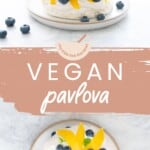
Quick Start Guide To BLW
Baby led weaning doesn’t need to be complicated, grab my quick start guide to begin your little ones food journey.